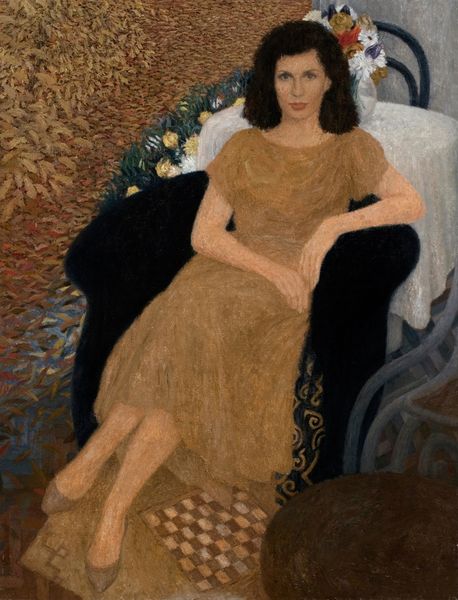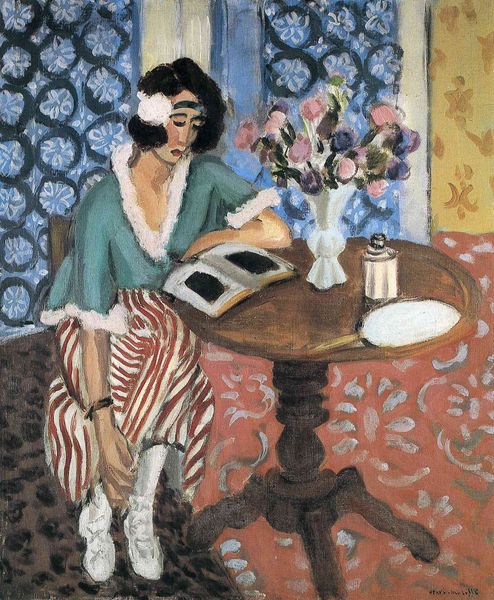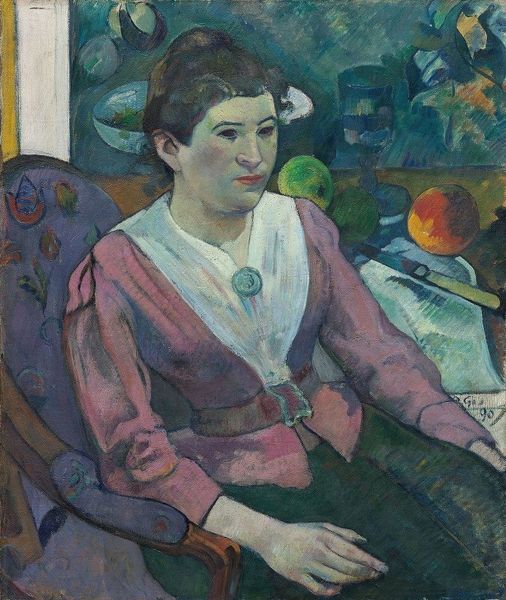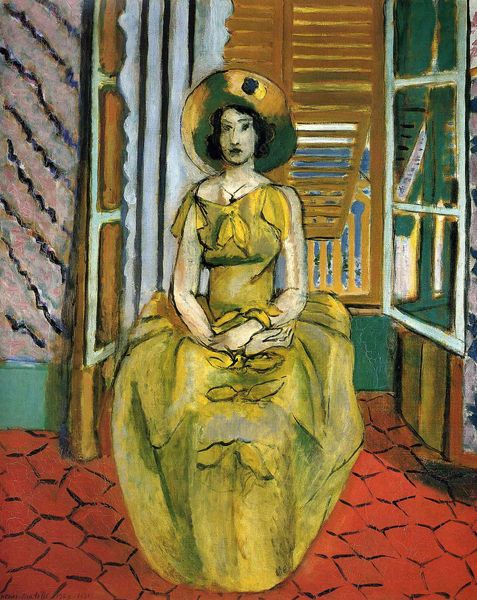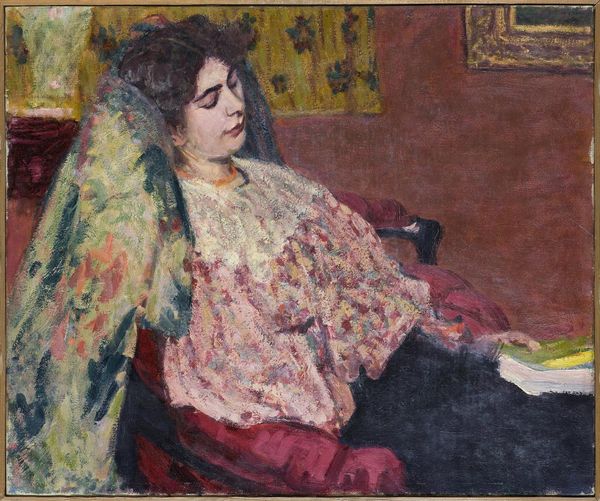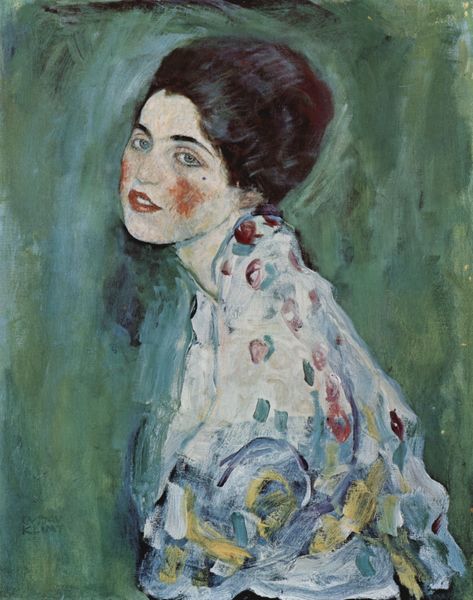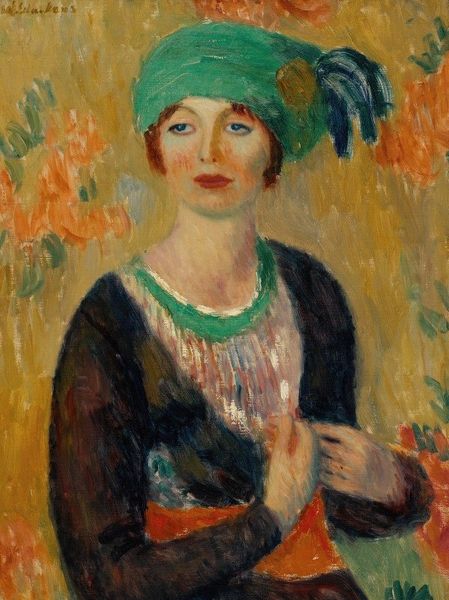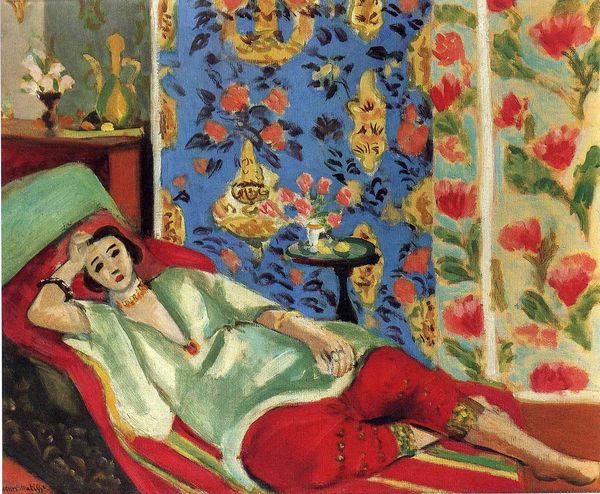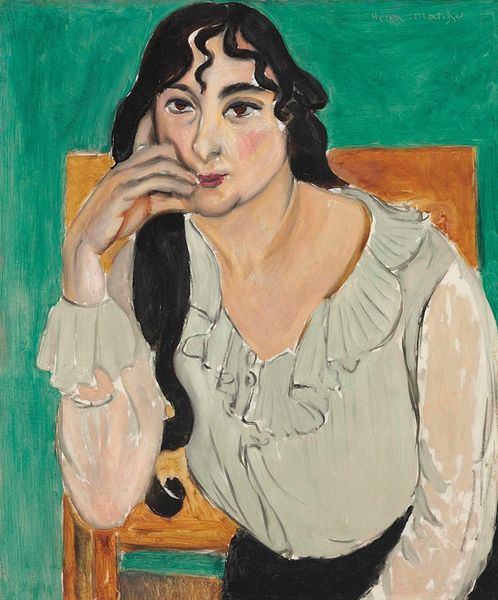
painting, oil-paint
#
portrait
#
figurative
#
fauvism
#
painting
#
impressionism
#
oil-paint
#
figuration
#
oil painting
#
intimism
#
les-nabis
#
post-impressionism
#
portrait art
Copyright: Modern Artists: Artvee
Editor: Here we have Henri Matisse’s painting "La Femme en jaune," which translates to "Woman in Yellow." It’s an oil painting portraying a woman in a yellow dress holding a sheet of music. What strikes me is how the vibrant patterns in the background and foreground seem to compete with the figure. What do you see in this piece? Curator: For me, this work embodies a fascinating tension inherent in early 20th-century artistic explorations of femininity and domesticity. It challenges conventional portrayals by disrupting traditional power dynamics. Matisse places the woman within a constructed space that feels almost claustrophobic with its patterns and vibrant colors. How do these decorative elements function in relation to the figure? Editor: Well, they don't seem to subordinate themselves to her. Instead, they assert themselves, creating an almost dizzying effect. Curator: Exactly! Consider how the flattened perspective and bold color choices reject the illusionistic depth that was historically used to elevate the subject, often female, placing them on a pedestal for the male gaze. Instead, Matisse democratizes the space, positioning the woman as one element among many within a complex arrangement. What impact does this have on your interpretation of the woman’s identity and agency? Editor: It makes her feel less like an object and more like a participant in her environment. Curator: Precisely. This seemingly simple portrait speaks volumes about changing social dynamics. Matisse subtly critiques traditional power structures and offers a more nuanced representation of the modern woman. Editor: That’s fascinating! I never considered how much social commentary could be packed into such a vibrant and seemingly decorative painting. Curator: Art always reflects and shapes its time. Exploring those connections is key to unlocking deeper meanings.
Comments
No comments
Be the first to comment and join the conversation on the ultimate creative platform.

